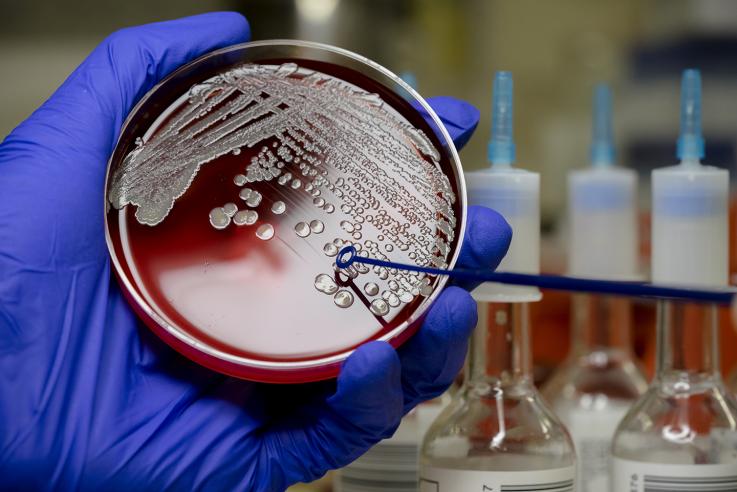(单词翻译:单击)
The U.S. Centers for Disease Control and Prevention reports that 2 million people a year are sickened in the U.S. by bacteria or fungi resistant to major antibiotics, and that 23,000 die from them. “It's probably a vast underestimate,” says Karen Hoffmann, who heads the Association for Professionals in Infection Control and Epidemiology. “We don't have a good reporting system for multiresistant organisms, so we don't really know.” Studies suggest the cost to the U.S. health care system of treating patients with these hardy bugs tops $3 billion a year.
美国疾病控制与预防中心报告称,美国每年有200万人因对主要抗生素具有耐药性的细菌或真菌而患病,其中2.3万人因此死亡。“这可能被大大低估了,”世卫组织领导感染控制和流行病学专业人员协会会长凯伦·霍夫曼表示。“我们没有一个很好的多耐药性生物报告系统,所以我们真的不知道。”研究表明,美国卫生保健系统每年为治疗这些顽强病菌患者的费用高达30亿美元。

This grim trend is expected to accelerate. The World Health Organization predicts that worldwide death rates from drug-resistant microbes will climb from the current 700,000 per year to 10 million by 2050. At that point, they will have surpassed cancer, heart disease and diabetes to become the main cause of death in the human race. Before antibiotics, a small cut, tooth decay or routine surgery could lead to a life-threatening bacterial infection. Penicillin, the “miracle drug,” and other antibiotics changed all that, saving countless lives over the years. But the age of the miracle drug seems to be ending.
这一严峻的趋势预计将加速。世界卫生组织预测,到2050年,全球耐药微生物的死亡率将从目前的每年70万上升到1000万。到那时,它们将超过癌症、心脏病和糖尿病,成为人类的主要死亡原因。在使用抗生素之前,小切口、蛀牙或常规手术都可能导致危及生命的细菌感染。盘尼西林这种“神奇的药物”和其他抗生素改变了这一切,多年来挽救了无数人的生命。但这种神奇药物的时代似乎即将结束。
Doctors are learning how to identify and isolate the bugs that are already resistant in the hopes of avoiding large outbreaks. They are scrambling to tighten up on the use of antibiotics in an effort to slow the development of resistant strains. It's too little, too late: The strategy will only buy us some time. At the moment, the oldest and weakest patients in hospitals are most affected, but the risks are spreading. “We're seeing healthy young people with urinary tract and skin infections that we don't have a pill for,” says Helen Boucher, an infectious disease specialist at Tufts Medical Center in Boston. “And we may not be able to perform organ transplants, and even routine surgeries like joint replacements. We should all be scared.”
医生们正在学习如何识别和隔离已经具有抗药性的细菌,希望能避免大规模爆发。他们正忙于收紧抗生素的使用,以减缓耐药菌株的发展。这一策略只会为我们赢得一些时间。目前,医院中年龄最大和最虚弱的病人受到的影响最大,但风险正在蔓延。“我们看到健康的年轻人患有泌尿道和皮肤感染,但我们没有药物治疗,”波士顿塔夫茨医学中心的传染病专家海伦·鲍彻说。“我们可能无法进行器官移植,甚至无法进行像关节置换这样的常规手术。我们都应该有危机意识。”
译文由可可原创,仅供学习交流使用,未经许可请勿转载。


